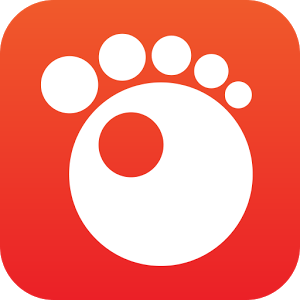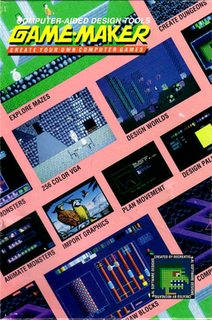
Exchangeable image file format is a standard that specifies the formats for images, sound, and ancillary tags used by digital cameras, scanners and other systems handling image and sound files recorded by digital cameras. The specification uses the following existing file formats with the addition of specific metadata tags: JPEG discrete cosine transform (DCT) for compressed image files, TIFF Rev. 6.0 for uncompressed image files, and RIFF WAV for audio files. It is not used in JPEG 2000 or GIF.

Rockbox is a free and open-source software replacement for the OEM firmware in various forms of digital audio players (DAPs) with an original kernel. It offers an alternative to the player's operating system, in many cases without removing the original firmware, which provides a plug-in architecture for adding various enhancements and functions. Enhancements include personal digital assistant (PDA) functions, applications, utilities, and games. Rockbox can also retrofit video playback functions on players first released in mid-2000. Rockbox includes a voice-driven user-interface suitable for operation by visually impaired users.

Voice Recorder is an audio recording program included in most versions of the Microsoft Windows family of operating systems. Its user interface has been replaced twice in the past.
A container format or metafile is a file format that allows multiple data streams to be embedded into a single file, usually along with metadata for identifying and further detailing those streams. Notable examples of container formats include archive files and formats used for multimedia playback. Among the earliest cross-platform container formats were Distinguished Encoding Rules and the 1985 Interchange File Format.

SonicStage is a discontinued software from Sony that is used for managing portable devices when they are plugged into a computer running Microsoft Windows. It comprises a music player and library manager, similar to iTunes, Windows Media Player and RealPlayer. It is used to manage the library of ATRAC OMG/OMA and MP3 recordings on a PC. It was first used in VAIO PCs put on the Japanese market in October 2001, and superseded OpenMG Jukebox. Version 2 was found on 2004 model products, and Version 3 on 2005 model products. SonicStage was required to transfer and manage music on all network-enabled Walkman digital audio players and MiniDisc players, before the software was dropped in 2007.
Sim RPG Maker is a series of tactical role-playing game software and spinoff of the long-running RPG Maker series, although the name is not a direct translation of the original name which would be "Simulation RPG Maker".
Fighter Maker(格闘ツクール, Kakutō Tsukūru) is a series of games for PlayStation consoles and Microsoft Windows. It features a robust character creation system, letting players even create animations. There are two versions of the games, Fighter Maker and 2D Fighter Maker.

RPG Maker 2003 is the third in the series of programs for the development of role-playing games, developed by Kadokawa Games. It features a database of pre-made backgrounds, music, animations, weapons and characters.

The loosely defined category of S1 MP3 players is comprised by a large amount of then-inexpensive handheld digital audio players. The players were mainly widespread around 2005–2006 but the series continued for years afterwards, blurring into that of so-called "MP4 players" employing S1 and competing architectures.
RPG Maker 95 is the first RPG Maker series title for Microsoft Windows. The tool is also the first version on computer systems in the series to receive an unauthorized English translation and release.
ACT is a lossy ADPCM 8 kbit/s compressed audio format recorded by most Chinese MP3 and MP4 players with a recording function, and voice recorders.

GOM Player is a media player for Windows, developed by GOM & Company. With more than 100 million downloads, it is also known as the most used player in South Korea. Its main features include the ability to play some broken media files and find missing codecs using a codec finder service.

EasyTag is a graphical tag editor for Linux and Microsoft Windows. An attempt to bring EasyTAG to OS X is ongoing. It is written in C and relies on GTK+ and id3lib for graphics and ID3 tag handling respectively. As of version 2.1.1, EasyTag also uses the tag manipulation library provided by the MAD project, for support of ID3v2.4.
RPG Maker, known in Japan as RPG Tsukūru, is a series of programs for the development of role-playing video games (RPGs) with story-driven elements, created by the Japanese group ASCII, succeeded by Enterbrain. The Japanese name, Tsukūru, is a pun mixing the Japanese word tsukuru (作る), means "make" or "create", with tsūru (ツール), the Japanese transcription of the English word "tool".
RPG Maker 3(RPGツクール, RPG Tsukūru, without a number) is the fourth PlayStation version of the RPG Maker series. It is the second game in the series released on the PlayStation 2. The game was also released on the PlayStation 3 on April 16, 2013 through the PlayStation Network.

RPG Maker VX is a version of PC program RPG Maker series. It has been superseded by RPG Maker VX Ace, which is an improved and enhanced version of RPG Maker VX. Both RPG Maker VX and RPG Maker VX Ace are developed by Enterbrain, following its predecessor, RPG Maker XP. RPG Maker VX follows the naming pattern present in previous RPG Maker releases by having a suffix based on the Windows versions the software was designed for.
Adaptive differential pulse-code modulation (ADPCM) is a variant of differential pulse-code modulation (DPCM) that varies the size of the quantization step, to allow further reduction of the required data bandwidth for a given signal-to-noise ratio.

The Dingoo is a handheld gaming console that supports music and video playback and open game development. The system features an on-board radio and recording program. It is available to consumers in three colors: white, black, and pink. It was released in February 2009 and has since sold over 1 million units.

XMedia Recode is a freeware video and audio transcoding program for Microsoft Windows developed by Sebastian Dörfler. It can import and export many types of files such as WMV, MP4, MP3, 3GP, Matroska and more. XMedia Recode can convert unprotected DVDs or DVD files to any supported output file. XMedia Recode features a drag-and-drop style interface and uses job queuing and batch processing to automate the task of transcoding multiple files.

Game-Maker is an MS-DOS-based suite of game design tools, accompanied by demonstration games, produced between 1991 and 1995 by the Amherst, New Hampshire based Recreational Software Designs and sold through direct mail in the US by KD Software. Game-Maker also was sold under various names by licensed distributors in the UK, Korea, and other territories including Captain GameMaker and Create Your Own Games With GameMaker!. Game-Maker is notable as one of the first complete game design packages for DOS-based PCs, for its fully mouse-driven graphical interface, and for its early support for VGA graphics, Sound Blaster sound, and full-screen four-way scrolling.










